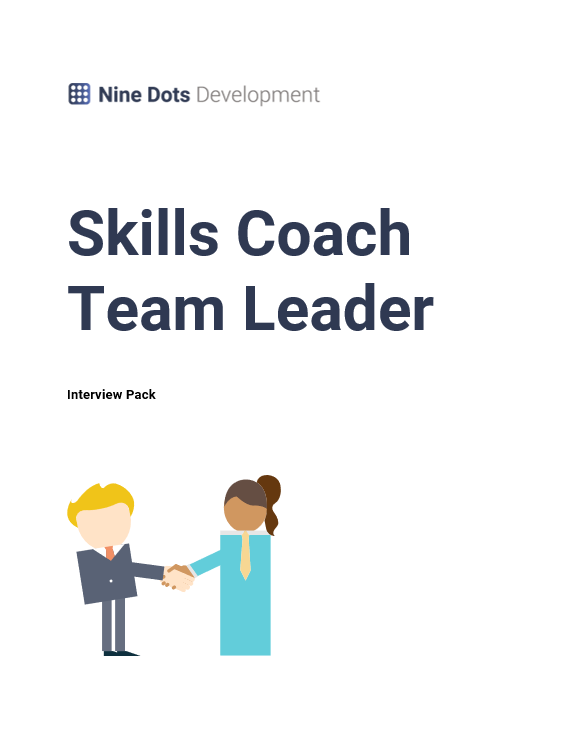Thursday 14 Oct 2021 Article
The TakeawayA Good Quick Guide to Hiring a Leader or Manager
Staff Development in the New World
Part 2
#Leadership #Management #Recruitment #Interviewing #PeopleDevelopment
The perfectly matched resource for this article...
Example Interview Pack for Hiring Leaders and Managers
Please click below to download our 'Example Interview Pack for Hiring Leaders and Managers'
Download!Playing catchup?
A Good Quick Guide to Hiring a Leader or Manager
Building a skilled team and hiring the right people for the right roles can be challenging, particularly in this new, unfamiliar world. There are two primary ways to recruit for a vacant role - internally, or externally.
In today’s article, we explore how you can build a skilled, competent, and high-achieving team by recruiting externally and having a strong, structured approach to interviewing potential candidates. To bring the recruitment and interviewing process to life in this article and show you how it translates to real life, we use the steps we took when recruiting a Skills Coach Team Leader as an example throughout this article.
Internal vs External Recruitment
Internal and external recruitment both have their advantages and disadvantages, and each approach is more suitable in different circumstances. For example, when we were recruiting for a Skills Coach Team Leader position, we decided to recruit internally as we already had someone experienced and qualified for the role at our company.
External recruitment can be a great option, particularly for SMEs, as it widens the talent pool and allows you to find an ideal candidate that is truly right for the role. External recruitment can also be very beneficial when hiring a leader or manager as leadership requires a very specific natural talent that not everyone has, so by recruiting externally you increase your chance of finding a candidate that is a natural-born leader. Hiring a natural-born leader means that they will likely be ready to fully take on the role sooner as, whilst they will need some training to solidify their knowledge, natural-born leaders usually require less training than an internal hire who may not naturally suit a leadership role.
Once we decided to recruit internally, it was time to formulate the interview plan. To do this effectively, it’s important to have an understanding of the true aim and purpose of interviews, common interview traps to avoid, and how to host a truly great interview that gets you the candidate your team desires and needs.

Common Interview Mistakes to Avoid
Firstly, it’s important to note what interviews aren’t - they aren’t about giving candidates countless questions, which can be very intimidating and off-putting for even the best talent. Interviews are about determining whether the candidate would be the right fit for the role and company and if they have the aptitude needed to succeed in the role you’re looking to fill.
When holding interviews, there are several common mistakes that people make, including:
- Letting their liking of the candidate personally overshadow whether they are actually right for the role or not
- Asking generic questions in all interviews for all positions, rather than tailoring the questions to the role
- Assuming that someone will be a good leader just because they are good at their current job e.g. in our example, assuming someone would be a good Skills Coach Team Leader just because they’re a good Skills Coach
- Trusting the candidate's CV too much and not making sure they can actually demonstrate all of the skills and knowledge that they claim to have
How to Hold a Fantastic Interview
Avoiding these mistakes is relatively simple - you just need to plan ahead. Failing to prepare is preparing to fail.
By creating a good, concrete interview process, you can make sure that you’re hiring the right people for the right roles. There are 3 main steps to creating a great recruitment plan:
1. Identify the Required Skills, Competencies, and Behaviours
Doing this helps you better understand what your ideal candidate looks like and what skills, competencies, and behaviours you need to look out for during the interview.
2. Develop Interview Questions
Based on the skills, competencies and behaviours you identify, you then need to develop interview questions which determine whether the candidate meets this criteria or not. For example, if one of the competencies for our Skills Coach Team Leader role was prior experience of using Slack, one question that we could ask would be “How would you create a new channel in Slack?” - this would signify whether they actually had experience with the software.
{{ADVERT}}
3. See How The Candidate Matches Up to the Criteria
In the interview, ask the questions you have developed and make sure you keep a written record of what they reply and whether it meets the competencies or not. This not only informs your final decision of who to hire once you have completed all of your interviews, it also provides you with a written account of exactly what was said so if you have to refer back to this, you have a record. This can be particularly helpful should anyone question you around your selection process.
Our Tried and Tested Example Interview Pack
As we have mentioned throughout this article, we used this structured approach to create an interview pack when hiring for a Skills Coach Team Leader position and it worked very well for us.
If you’re looking for some ideas on what you could put into an interview plan for a similar role or if you just want to see how the information in this article translates into an actual plan, you can click here to download our example interview pack.
---
Until next time...
Example Interview Pack for Hiring Leaders and Managers
Please click below to download our 'Example Interview Pack for Hiring Leaders and Managers'
Download!Missed an article?
More from Staff Development in the New World
